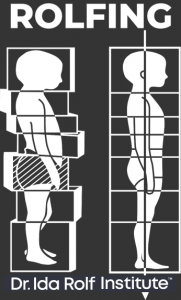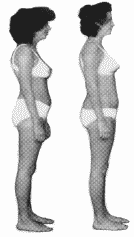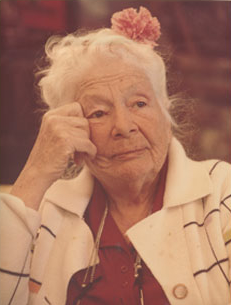WHY DO PEOPLE GET ROLFED?
This is simple: Most people get Rolfed because they to various degrees want to look, feel and perform better.
‘To feel better’ is the most common motive. So many people have issues with poor posture and/or stress, discomfort, pain, restricted range of motion and reduced performance from sports or other injuries, from repetitive patterns at work, et cetera. Often people have a general feeling of tiredness and helpless stuckness in their patterns and problems. They want relief and are willing to do whatever it takes to get it.
Often Rolfing is a last resort after people have tried the more common modalities without receiving the benefits they hoped for. More and more often as people are hearing really good things about Rolfing from family, neighbors, friends, co-workers and even some medical professionals. The idea about how much our very structure effects how we feel and function sounds right to them. They choose to do Rolfing knowing that it will be uncomfortable or painful at times.
Most often people come to Rolfing after they have tried more common modalities. I often hear things like: “Rolfing gives me the feeling of freedom I always wanted from massage but never got;” or “Chiropractic adjustments only lasted a little while;” etc. It’s true that massage, chiropractic, yoga, acupuncture, Pilates, et cetera are useful in many situations. But what if you’ve tried them and they haven’t given you what you want? Given that Rolfing is a unique approach it could be worth exploring. As mentioned elsewhere on the site, I offer a discounted introductory consultation and mini-session so potential clients can better understand and feel directly what Rolfing is all about.
Rolfing is at it’s best in dealing with nagging chronic problems. Most of us have had some experience with low back pain and stiffness first thing in the morning, the tired shoulders, upper back and neck that ache by the end of the day, and all the many varieties of these kinds of issues.
It’s been estimated that 80% of the pains people commonly experience are due to chronic structural problems.
Rolfing can also be helpful with treating fresh acute injuries in back pain, sprained ankles, wonky knees, neck and upper back spasms, strained shoulder muscles and those kinds of things by working around the inflamed damaged tissue.
HOW DOES IT FEEL? All that some people have heard about Rolfing is how painful it is; how muscles are being pulled off of the bones or other lurid tales. These stories have stopped many people from getting Rolfed. It is fair to say that many of these people will live with pain or restrictions that they wouldn’t have had to if they’d gotten Rolfed. That said it is true that Rolfing to some degree will be uncomfortable or painful for brief moments in most sessions for most people.
HERE’S WHAT IS DIFFERENT: Most pain is caused by trauma to the body. You injure some place and it hurts afterwards more or less depending on what happened. But in Rolfing any discomfort you may feel goes away immediately as soon as the Rolfer removes their pressure. The tissue has not been traumatized. It always feels to me that tension was leaving my body not being inflicted. People often joke with things like: “It’s the pain I love to hate.” “You mean I’m paying you for this.” “Ohh – it’s the good kind of pain.” That said – I tell all of my clients: “If it ever feels like too much, or feels scary, or different than how it usually feels say ‘stop’ or lighten up.’” I assure them that this is in no way a failure on their part. The good news is that this rarely happens because I have exquisitely sensitive touch to the integrity of the connective tissue. I’ve been doing this work fulltime for almost 40 years. Skillful means involves applying enough pressure to get the maximum change without applying so much that the body recoils. This boundary is different in every part of every client’s body. Rolfing is an art as well as a science. Experience counts.
POOR POSTURE – We’ve probably all noticed that if we try to ‘stand up straight’ our attention wanders away in seconds. Rolfers make the important distinction between ‘posture’ and ‘structure.’ Posture is what we can consciously play with and structure is what we settle back into all the rest of the time. As I’ll get into more in The Ten-Series section structure is a whole body system and structural integration requires a whole body approach. In the Dr. Ida Rolf Section I talk more about her genius-level original insights on this matter. In the More on Rolfing Section I explain more about the fundamentals of this work
INJURIES – When the body gets hit, twisted, pulled the soft tissues get deformed. It is sort of like what you’d see happen to modeling clay when it is pushed and pulled on. Except that these tissues are tough elastic fibrous gelatin. These tissues are a colloidal medium. When they get compressed and stretched or torn or whatever it holds that pattern as it heals. There is no mechanism in it if a sprained ankle now rolls in when walking to get it back to where it works better. The distortion in the ankle’s structure and function will pull on that knee and up to the pelvis. The compensations will spread even wider through the body as the other leg takes up the extra stress and the torso rebalances itself. So while it is useful to just work on a sprained ankle much more needs to be addressed for optimum recovery. This is why Dr. Rolf said:
To fix a problem go where it isn’t.
This isn’t a fixed law of the Universe but it is a very useful concept and approach in dealing with the kinds of everyday issues people often have.
ATHLETIC PERFORMANCE – bodies work better when they are structurally integrated. This well mean something different in say the shoulders of a baseball pitcher and other situations that have heir own unique requirements. Structural integration is designed to enhance whatever the body needs to function best in specialized circumstances.
REPETITIVE STRESS PATTERNS – Humans aren’t built to do the same kind of limited movements over and over again, or sit at a desk or behind a steering well hours and hours day after week after month like many of us do. Rolfing can be very useful in helping remove or at least lessen these kinds of problems even as the patterns of use go on. Musicians are prone to these kinds of problems.
SLEEP – There was an interesting UCLA study measuring various things pre and post Rolfing on a group of volunteers. There were the EMGs, the electrical activity in muscles, before and after the series. The electrical activity at rest was lower and the contractions came on and went down much smoother. This translates as being at greater ease and peace when resting and sleeping, and more efficient when moving. Of course people whose sleep is disrupted by pain will sleep a lot better with the body more comfortable as well.
CONCLUSION – People get Rolfed because they want to look, feel and work better. They get Rolfed because they’ve heard or read good things about it, likely along with “Oh I hear it’s painful. Why would you do that?” The answer, my answer over 40 years ago was that I want to feel better. I was 30 years old with chronic low back pain and feet that ached when I stood or walked a lot. I not only felt but was told how much I hunched over. I am now into my 70s and nothing in my body hurts. When I have been injured like I was a few years ago when I moved some RR ties by myself (I know! But the two strong young guys I hired didn’t show up), some Rolfing sessions (I have to go to Colorado or California to find Rolfers with my level of expertise) got me back in good shape again.



